Many people give up on fishing for trout during the winter. I hear things like “it all fished out”, or “the fish don’t bite when its cold”. Nothing can be further from the truth – winter can be a great time to fish but does require doing things differently than in the summer.
In this article, I’ll cover how to change up your tactics so that you can have successful trout fishing in the winter. We will cover when, where and how to fish.
Gear Up Right
Fishing in winter isn’t just about knowing what lures to use, or where the fish are holding. A successful trip includes you and your crew having a good time. Even if the fishing is good, you aren’t going to be having fun if you are freezing.
I was once told “There is no such thing as bad weather, just bad gear” That was from an Orvis salesperson, so I take it with a grain of salt, but there is a lot of truth that the right gear can make the difference in being comfortable or not.
It starts off with your clothes. Multiple layers are key to being warm. It is best to start with all layers on, since you can always take a layer off if you are too cold.
You want to start with a warm base layer. Since we aren’t hiking or such, weight isn’t a concern and we aren’t going to be staying warm from moving – so a heavyweight base layer is suggested.
On top of that I add jeans and a shirt – usually one with a chest pocket so I can keep my phone close to my body – warm and dry. If fishing in really cold temperatures you should consider flannel lined jeans and a flannel shirt.
On my feet I wear some thick wool socks and insulated boots. If you are going to use your regular boots or shoes, then two pairs of socks – regular socks with the wool socks over them. One mistake people make is having their footwear too tight, which can limit circulation which will cause your feet to get cold.
I throw on a thick hoodie over everything.
Given I live in Washington state which is known for its rainy weather I always bring along my heavy duty rain bib and jacket. Even if it isn’t raining it can add another layer for warmth, and does a great job protecting from the wind – natural or caused by the boat going fast.
They say you lose 90% of heat through your head, so good headwear is essential for staying warm. I’ve worn a lot of stocking caps over the years, and the ones I like the best are US Navy Watchcaps.
You’ll also want to keep your hands warm if you want to be able to tie knots or work the fishing reel. I recommend wool gloves, since they will still keep you warm if they get wet – a very likely possibly when fishing. Fingerless versions let you keep them on while tying knots. Hand warmer pouches can also be quite helpful.
Warm Things Up
It is a great idea to have some ways of getting and keeping warm beyond warm clothes. Most of that is to keep things comfortable, but just like having a first aid kit onboard is a good idea if accidents happen – in winter you want to be able to warm people up if someone gets too cold or, heaven forbid, falls overboard into the cold water.
In the boat I also throw in a propane heater. My boat is open, so I just strap the tank on the side near where my passengers sit. It radiates enough heat they can feel it. However it does it rather hot and one needs to be careful. It can melt fishing line or rain gear really quickly. If your boat has a cabin, then a smaller heater is likely enough to warm the space so people can get comfortable. I find, however, that once the heater is on people don’t want to leave it and prioritize staying near the heater over fishing. So I leave the heater off unless it is really needed.
I bring along a lighter fluid hand warmer which I start when I get in the boat, and keep in the front pocket of my hoodie. When my hands are cold I just put them in that warm pocket and they warm right up. I used to use the one time use chemical hand warmers, but found they don’t get as hot or last as long as the lighter fluid kind. The lighter fluid ones are cheaper in the long run anyway.
An insulated water bottle – or thermos if you are old school – filled with the hot beverage of your choice is also handy. Make it a big one with some extra cups and you can share with your crew. I love those metal insulated water bottles, since I can use them year-round – I fill them with ice water for cool drinks on hot summer days.
If you are going to be fishing during lunchtime, then a hot lunch can perk your crew back up and give them the energy to keep fishing. You have a lot of options here. You can bring something hot onboard like soup in a thermos, or cook/warm something up on a portable grill or camp stove. Just set it up someplace out of the way, away from anything flammable. My favorite thing to cook are bratwursts, since they are pretty easy and don’t require much in the way of utensils or dishes. Premade breakfast burritos are a real treat – make them at home and wrap in foil. Then throw on the grill – set on low – for a while to warm them back up. Perhaps the fanciest meal we’ve done on my boat was tacos – everything was prepped at home with just the meat and tortillas needing to be warmed up on the boat.
Know About the Spawn
Most trout, such as rainbow and cutthroat spawn in the spring. The exact timing will vary by location – it could be as early as February or as late as May. For example cutthroat in Lake Sammamish spawn mostly in February, while the cutthroat in Omak Lake spawn in March and April.
It is important to know the time of the spawn because obviously if fish are in the streams spawning, they will not be in the lake waiting to be caught. Less obvious is that after the spawn the trout will be back in the lake feeding to bulk back up. While that can be a good time to catch fish, you’ll have to decide for yourself if it is ethical to target fish that are still stressed and recovering from spawning. If you do fish during that time and catch ones that are long and skinny, then I recommend letting those go as the meat is not at its peak, having been depleted during the spawning journey and activities.
To learn when the spawn happens at a specific location, the most reliable way is just experience. After fishing a location repeatedly, during different months and for a few different years you’ll notice the pattern. Another way to learn is from other anglers – talking to them at the boat launch, tackle shop, and so on. You may also be able to glean some information from online reports, especially if pictures show thin spawned out fish.
The spawning time at nearby locations is a likely clue as well. So once you figure out one lake, it is very likely other nearby lakes are very similar.
Pick Your Fight
The first thing to know when winter fishing is that the trout are much more weather sensitive than they are in the summer months. In the summer a change in the weather will throw off the bite for just a short time. In winter, however, a storm passing through can turn off the bite for days.
The ideal time to fish in winter is when the weather has held steady for at least 2 or 3 days, with the forecast indicating little change for a few more days. You may enjoy fishing that first nice day after a winter storm goes through, but the fish will still be recovering.
In summer the best days are those with some overcast, to help the fish feel secure and actively feed. In winter that isn’t as important. In fact in winter often the sunny days can be quite good, which can be counter intuitive. The reason is, I believe, is that the warm sunny days cause the water to heat up just a little which can trigger a bite – likely because triggers an insect hatch.
That isn’t to say a cold overcast day can’t be productive, but that the fish may not be quite as active as otherwise.
Personally the only weather I actively avoid in weather is windy or rainy days. Call me wimpy but fighting waves and getting wet on winter days is more uncomfortable than I want to do.
Unlike summer, which fishing close to dawn can be critical, winter fishing can actually be a bit better after the day has warmed up a bit. I recommend starting in the morning, perhaps an hour or two after sunrise. That should be enough time, while still getting you out on the water with enough time to find the fish and clue into what they are biting before things really turn on for the day.
Know Where to Go
Like fishing at any time of year, you’ll want to make sure you are fishing where the fish are – otherwise you aren’t going to catch much.
Just like in summer there are certain locations where the fish will tend to hold. During winter those locations might be different than during the summer. So don’t be surprised if nothing is happening at your summer hot spots.
Every lake is going to be different, as is the primary food source during winter. It will take time and experience to find those winter hot spots. However I can offer some tips which will help speed up that learning.
If you are approaching spawning time, then the fish often will start holding near the mouths of the creeks and streams they will go up to spawn. So that is a good place to start fishing.
During winter often the fish will stay around the shallower water. This is relative as it may mean 50 feet of water in a lake where much of it is deeper than 100 feet. Or it may mean 10 or 15 feet of water in lakes which only get 50 feet deep. My theory is the shallower water tends to heat up faster on sunny days, which is why the fish like it there.
Noticing where other boats are fishing, or reading past reports, may give you other ideas where the fish are at.
Like always pay attention to your surroundings. If you see fish rising then that is a pretty strong signal that is where the fish are at – and what depth they are. The behavior of birds may indicate hatching insects in a given area of the lake – which the trout likely also feed on. Lastly keep an eye on your fish finder – it is usually better to fish in an area you are marking fish rather than an area you aren’t.
Watch Your Depth
During the summer months we can pretty much rely on the fish concentrating near the thermocline, so determining that depth and focusing on it is a key to success. However in winter the water tends to be the same temperature at all depths, which can make it hard to find the fish.
One lake I fish during winter the trout tend to be in the top 20 feet of water. While another nearby lake the fish tend to be near the bottom along the 10-15 deep contour line. Its not clear to me why the difference, but it is consistent year to year. So the good news is once you figure it out for a given lake, it is likely going to be similar in future years.
Obviously, your fish finder is a very important clue to determining the right depth. Don’t be afraid to chase marks throughout the water column – especially if running multiple rods. However, be aware than if the fish are shallow, say less than 10 feet deep, they will likely scatter away from the boat – meaning they will not pass under the transducer and not appear on the finder.
Fish rising or jumping means they are feeding at or near the surface – and that is where you should focus your efforts.
Follow these clues until you start getting bites, then focus your efforts around that depth. The depths may change during the day based on typical factors like the day warming or cooling, sunny vs overcast, etc…
Go Big and Bright
During summer when the water is warm, the sun in bright and the water clear we often have the best success with smaller and darker lures, for example a size 8 black wooly bugger, or a small spoon. Going big and bold in those conditions usually spooks more fish than it attracts.
In winter the water is cold and often the days darker. You need something that will wake the fish up, and get them to take the lure. Larger lures with bright colors are often the ticket. My favorite winter fishing rig is a wedding ring lure with a large blade – all having UV reflective colors – tipped with some nightcrawler. A larger bright needlefish spoon is another winter favorite. When using flies I like big leach patterns, tied on a size 4 4x long hook, in bright pink or red.
If the trout feed off bait fish in the winter then a bright spoon, rapala or flatfish are go-to lures. Attempt to match the size and color of the bait fish which they feed on. That can be determined by research, or by cutting open the belly of the fish you catch.
I often find in winter that adding a long distance attractor of a dodger or gang troll can help, especially in larger lakes.
If your typical gear isn’t working, then bigger and brighter is probably the key.
Low and Slow
Just as it is important to use different lures in the summer, it is also important to work your lures at different speeds. With the colder water the fish are sluggish and tend not to want to move far or fast to chase down your lure. So slow down your presentation.
This slower speed may also have impact on what lure you use. That favorite spinner which works well in summer, may have too small a blade to spin well at a slower speed. Likewise that heavy kastmaster will sink too far if retrieved slow. It is therefore important to check that your gear works at the slower speed, and adjust your lure as needed.
Keep Your Distance
When fishing deep at the height of summer you probably didn’t have to worry too much about your gear being too close to the boat, since you had a lot of vertical separation. In winter when fishing shallow you need to make sure to maintain that distance.
A general rule of thumb is the rule of 100 – that is 100 feet of line out total. For example if you are going 30 feet down on the downrigger, then put the lure 70 feet back before putting the line in the clip. 30 + 70 = 100
However if the lake typically gets a lot of recreational boat traffic, then the fish may be extra wary of boats and modifying it to be the rule of 150 will likely get better results.
One advantage of having the line farther back is it gives you time to get your lure in position when chasing marks on the finder. A trolling speed of 1.0 MPH is about 1.46 feet per second. So if your gear is 100 feet back, that gives you about 68 seconds from the time a fish is directly under the boat until your gear passes by. Plenty of time to drop the downrigger lower, and let gear settle in at its new depth.
Conclusion
Winter fishing can be fun and successful, but requires some preparation and different strategies compared to summer. I hope you found this article helpful. Please share your favorite winter fishing lures or strategies in the comments section.


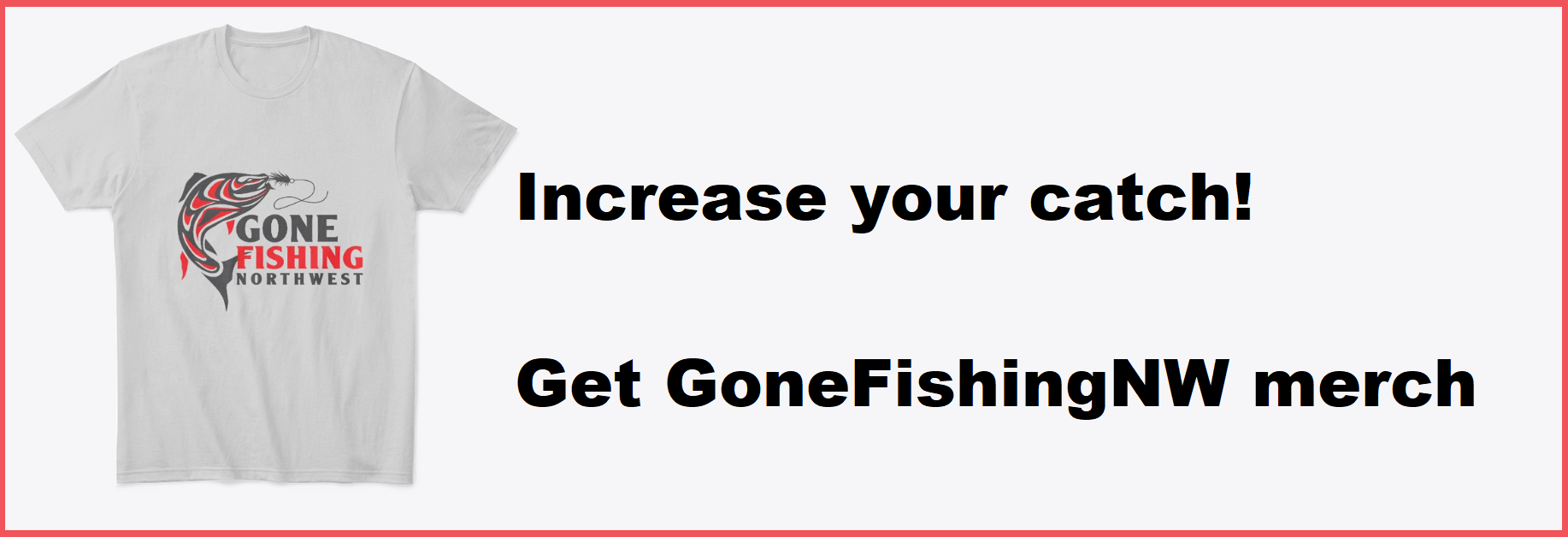

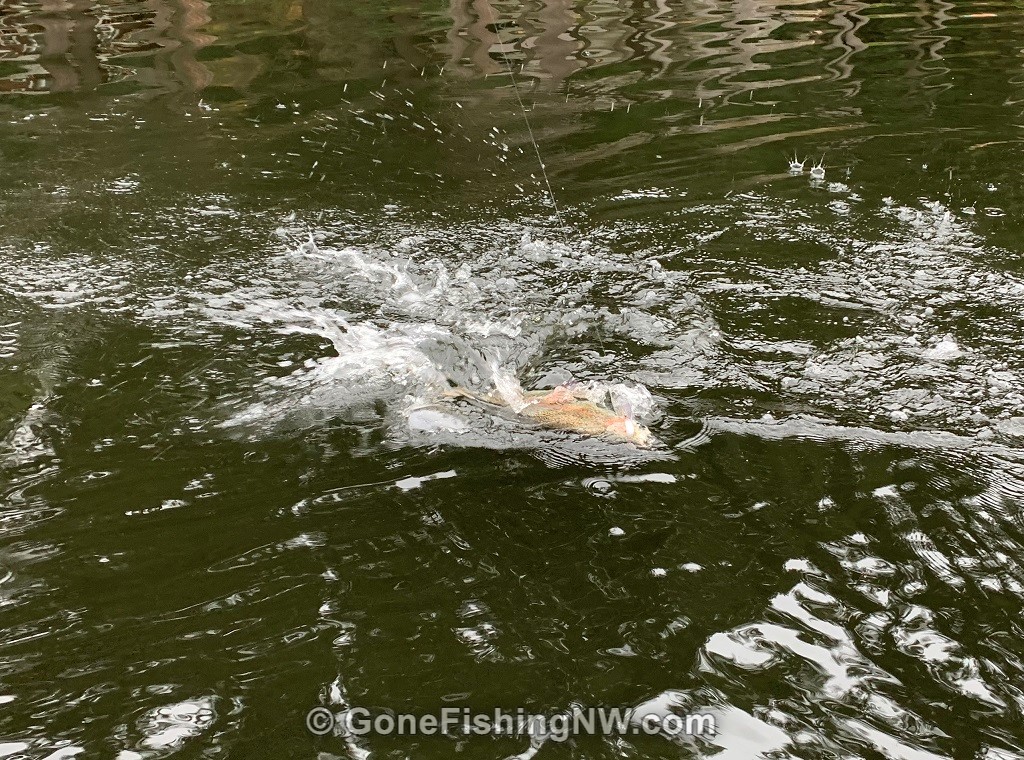
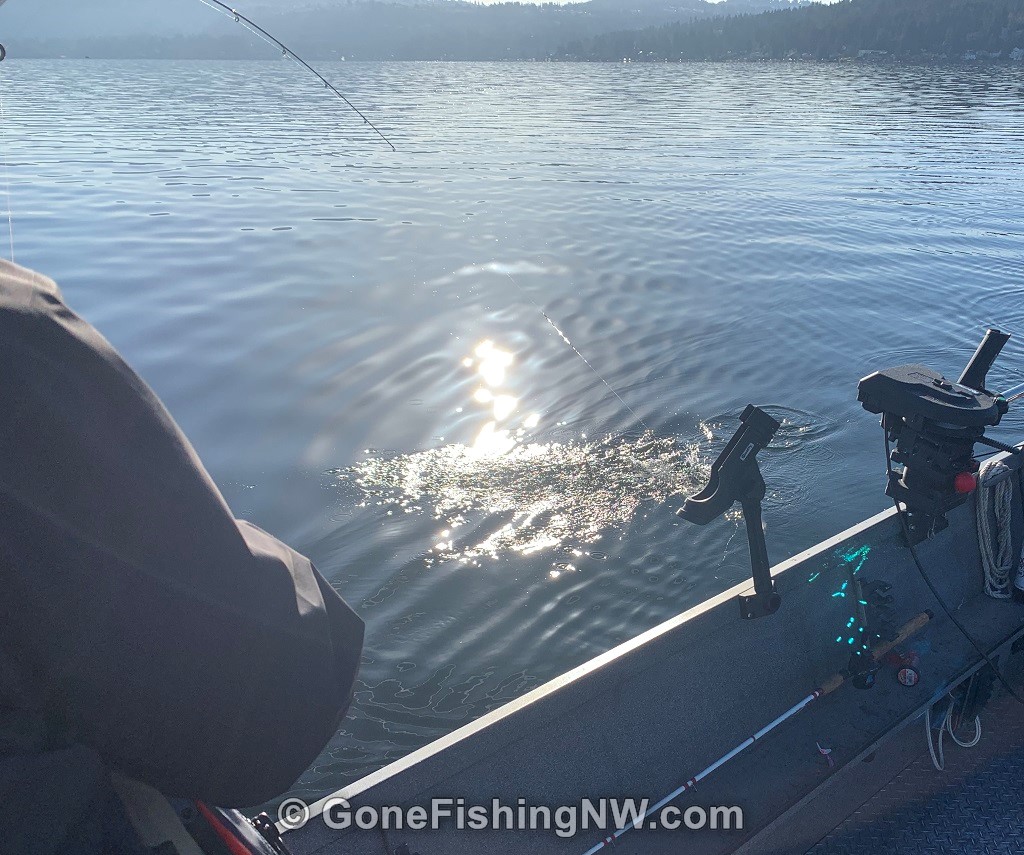
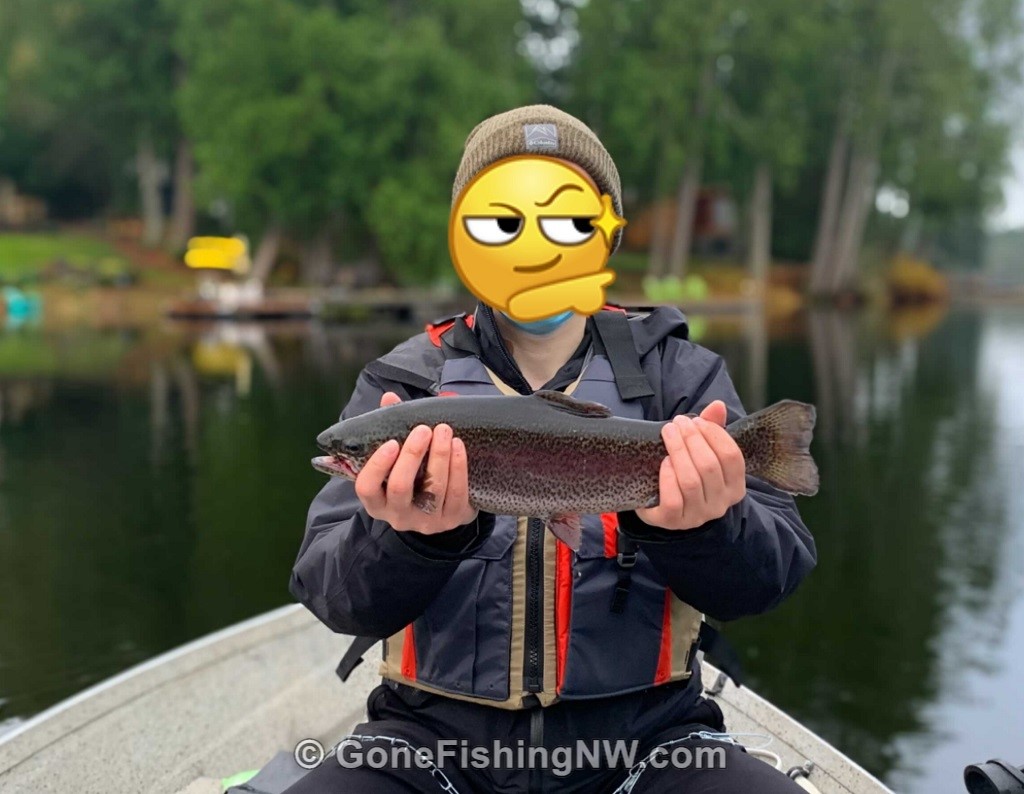
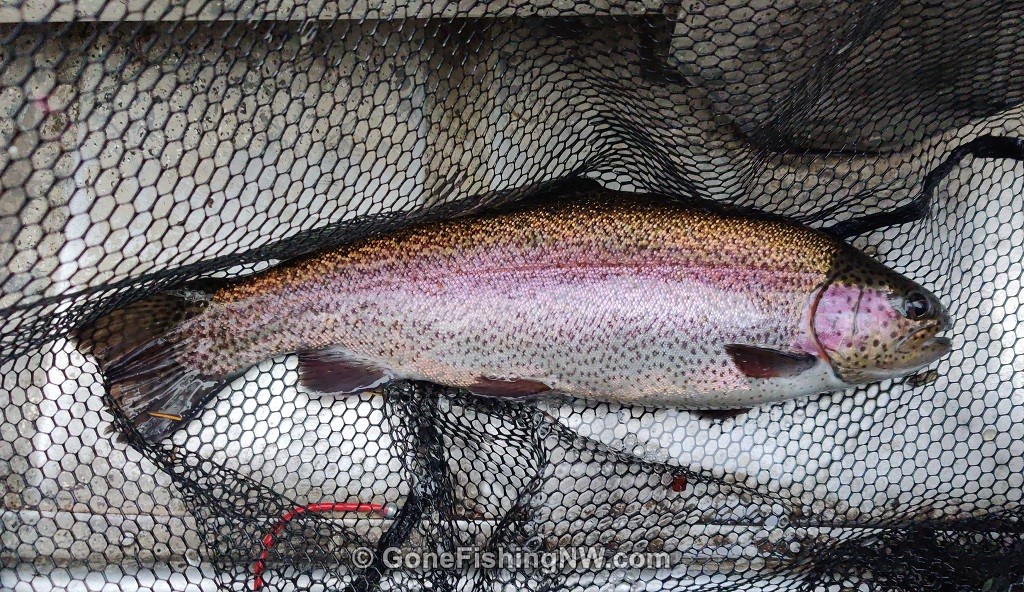
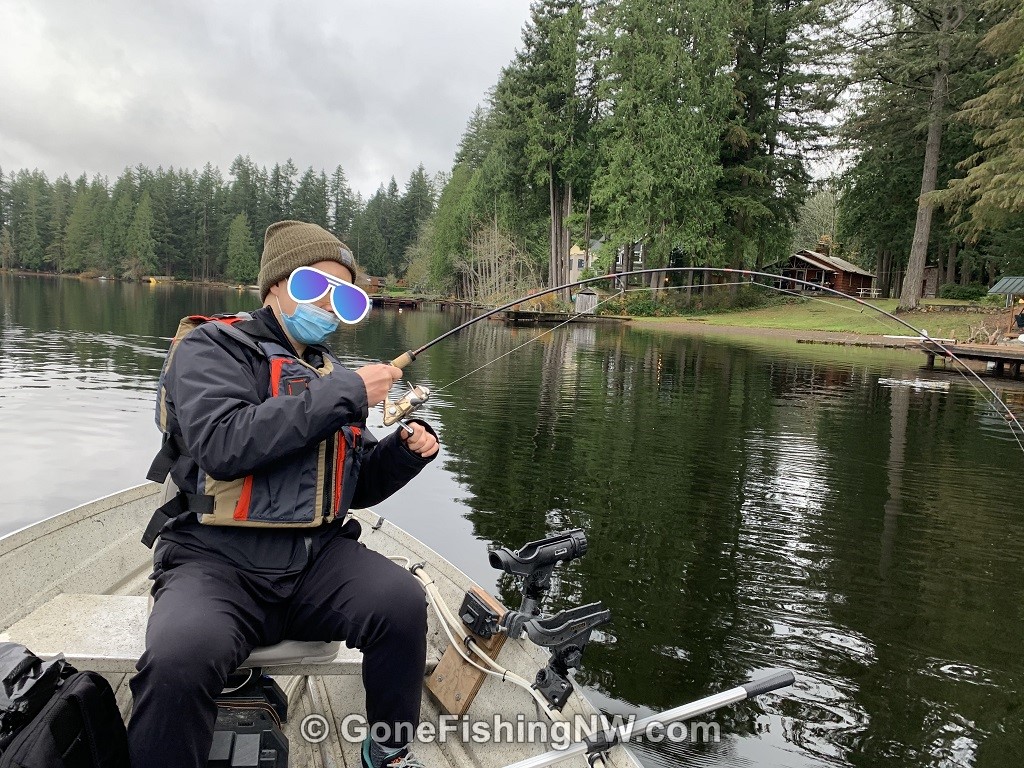
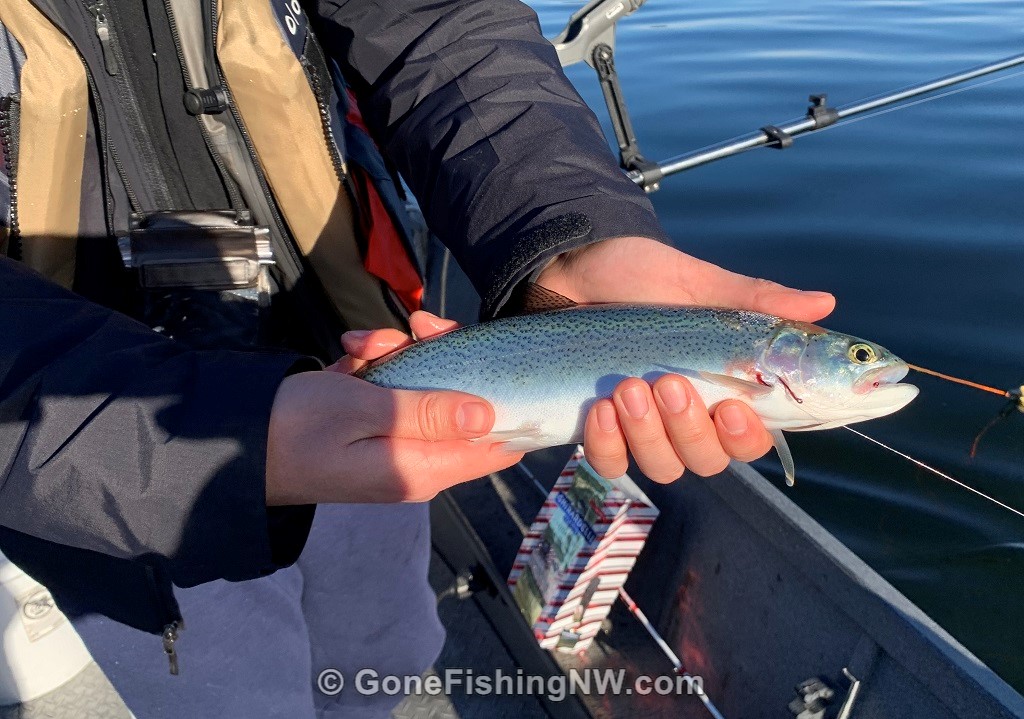
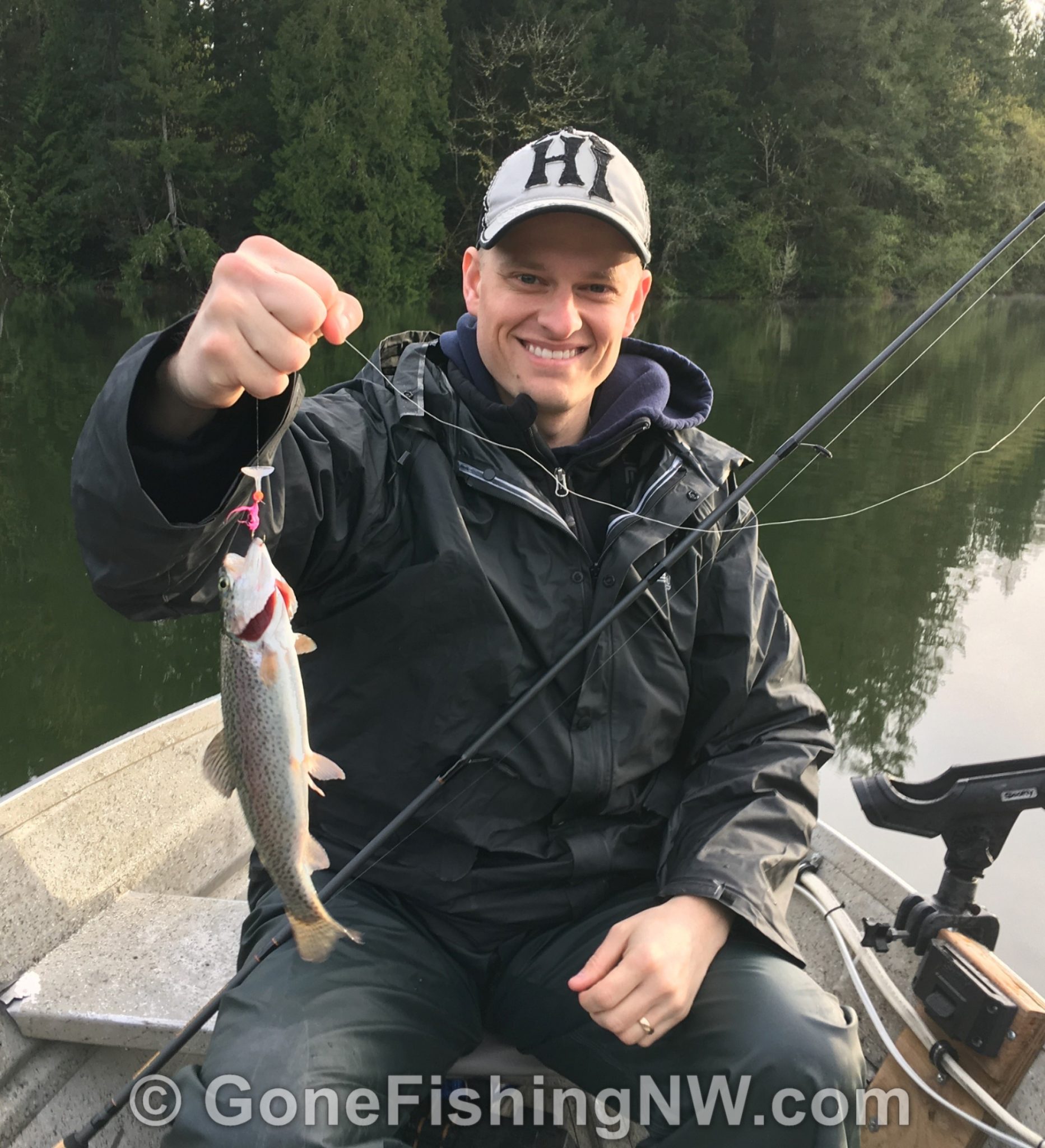
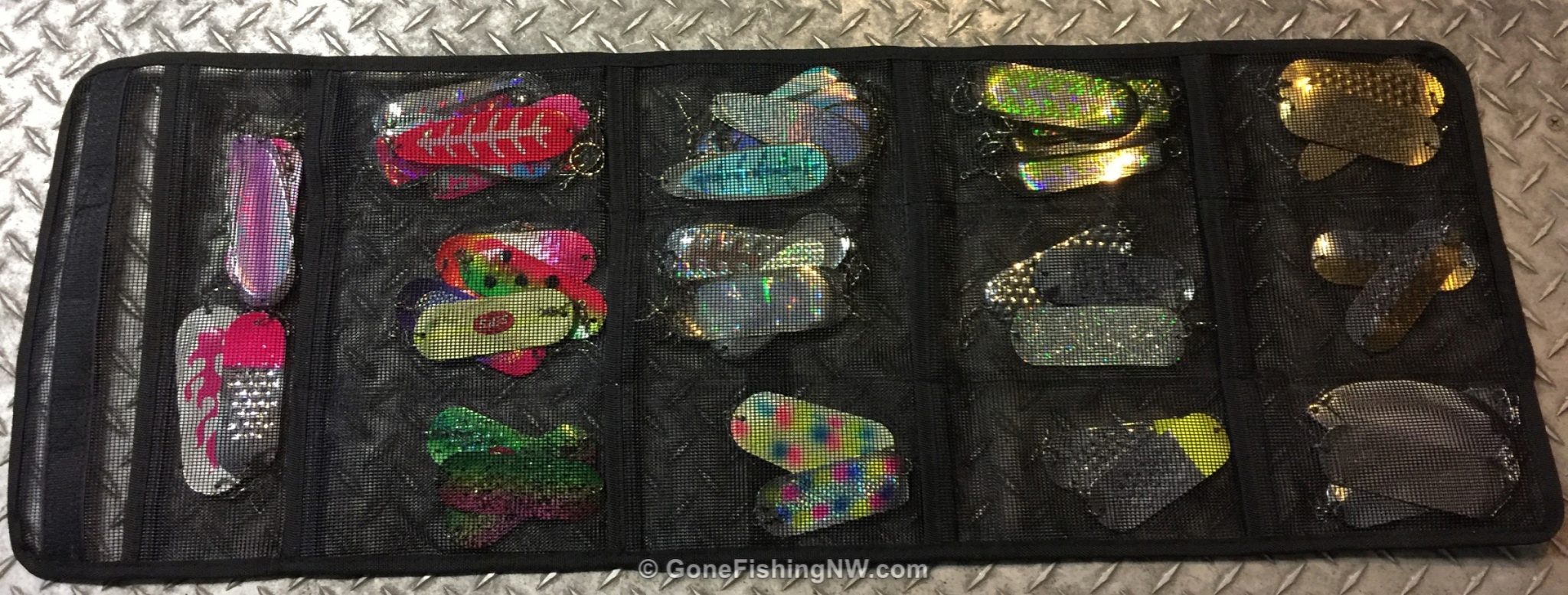
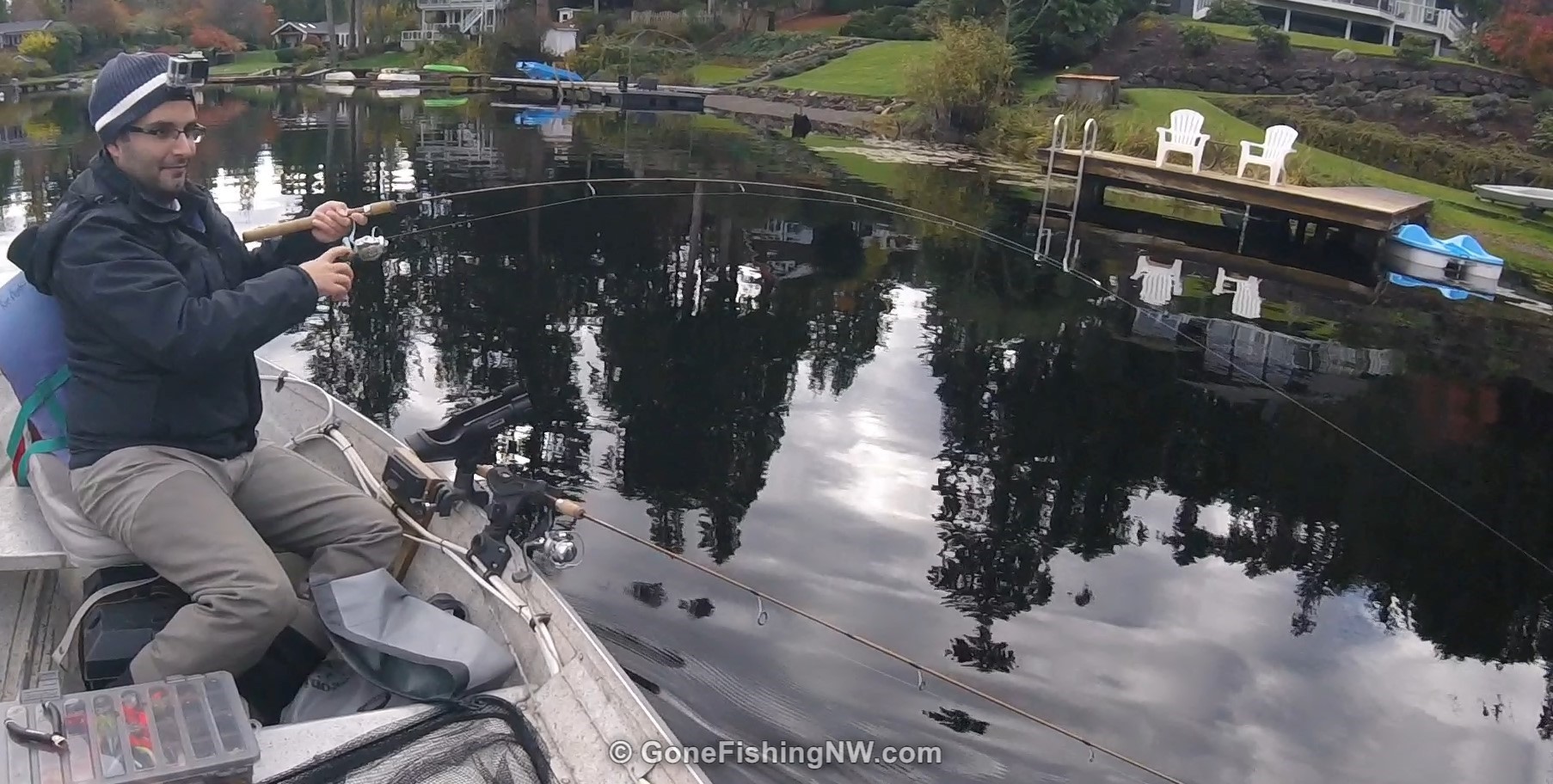
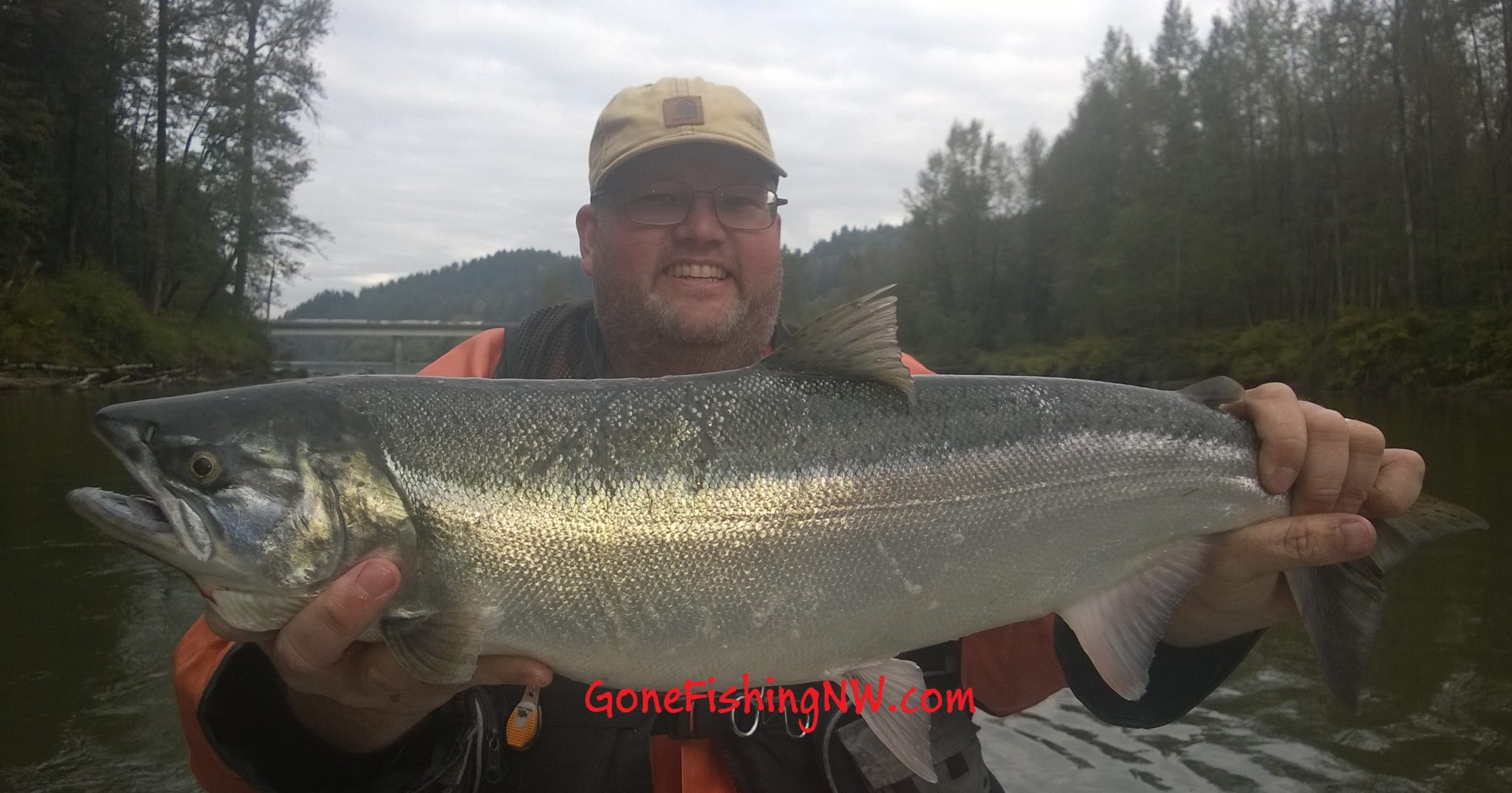
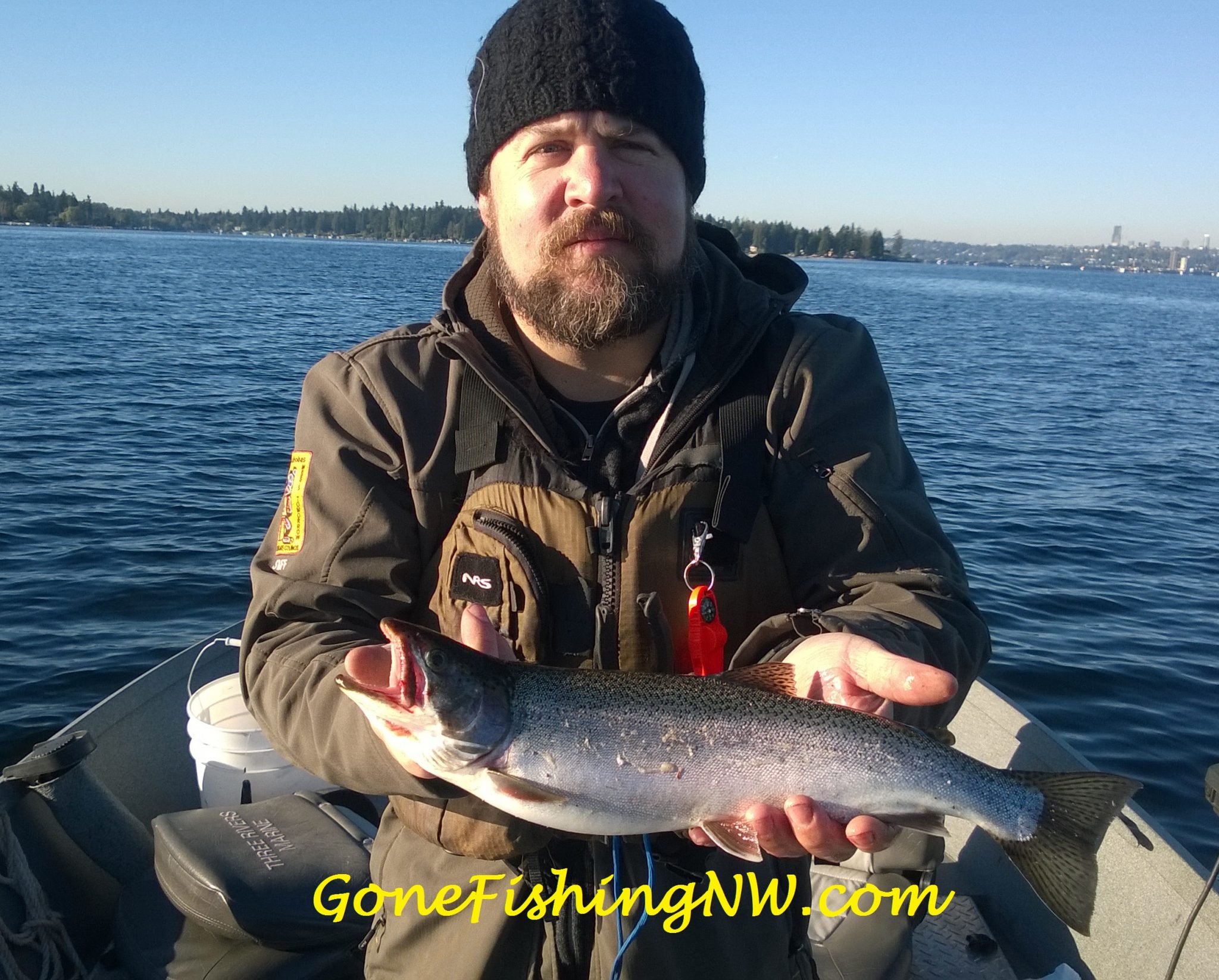
Comments are closed.